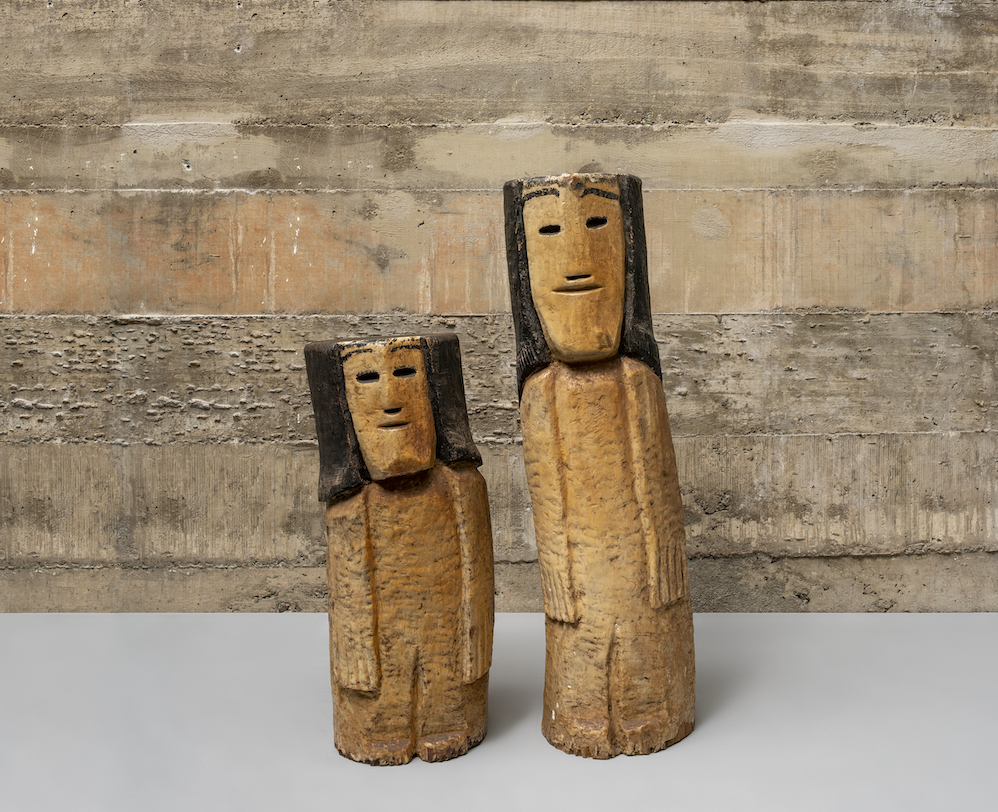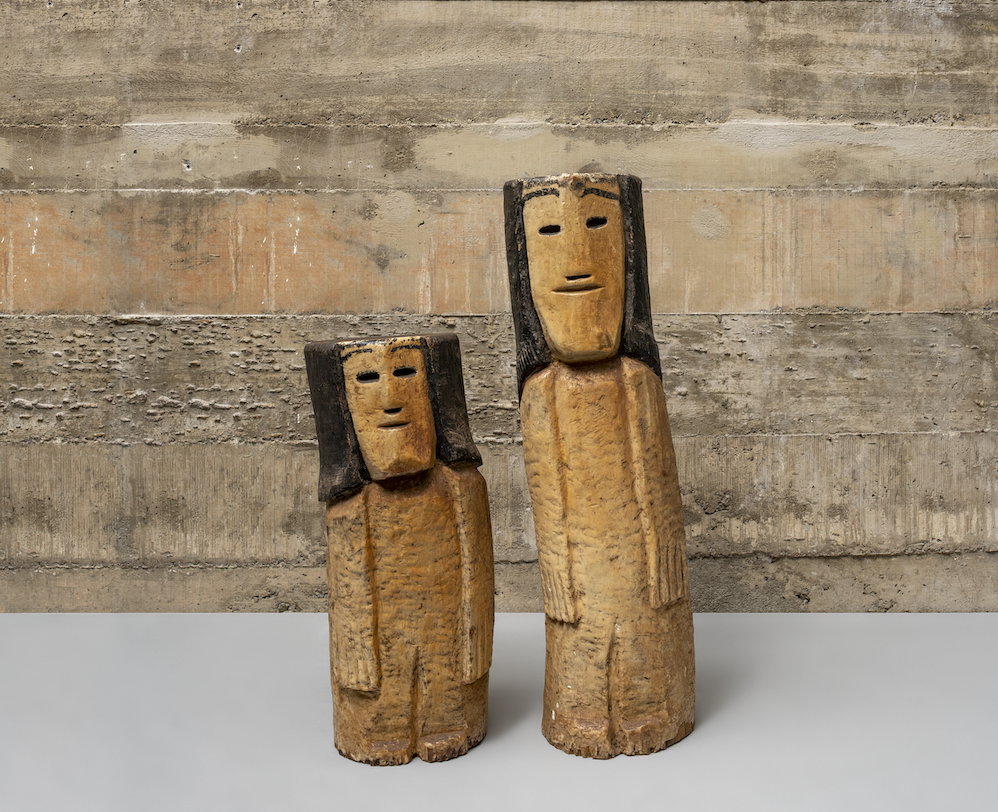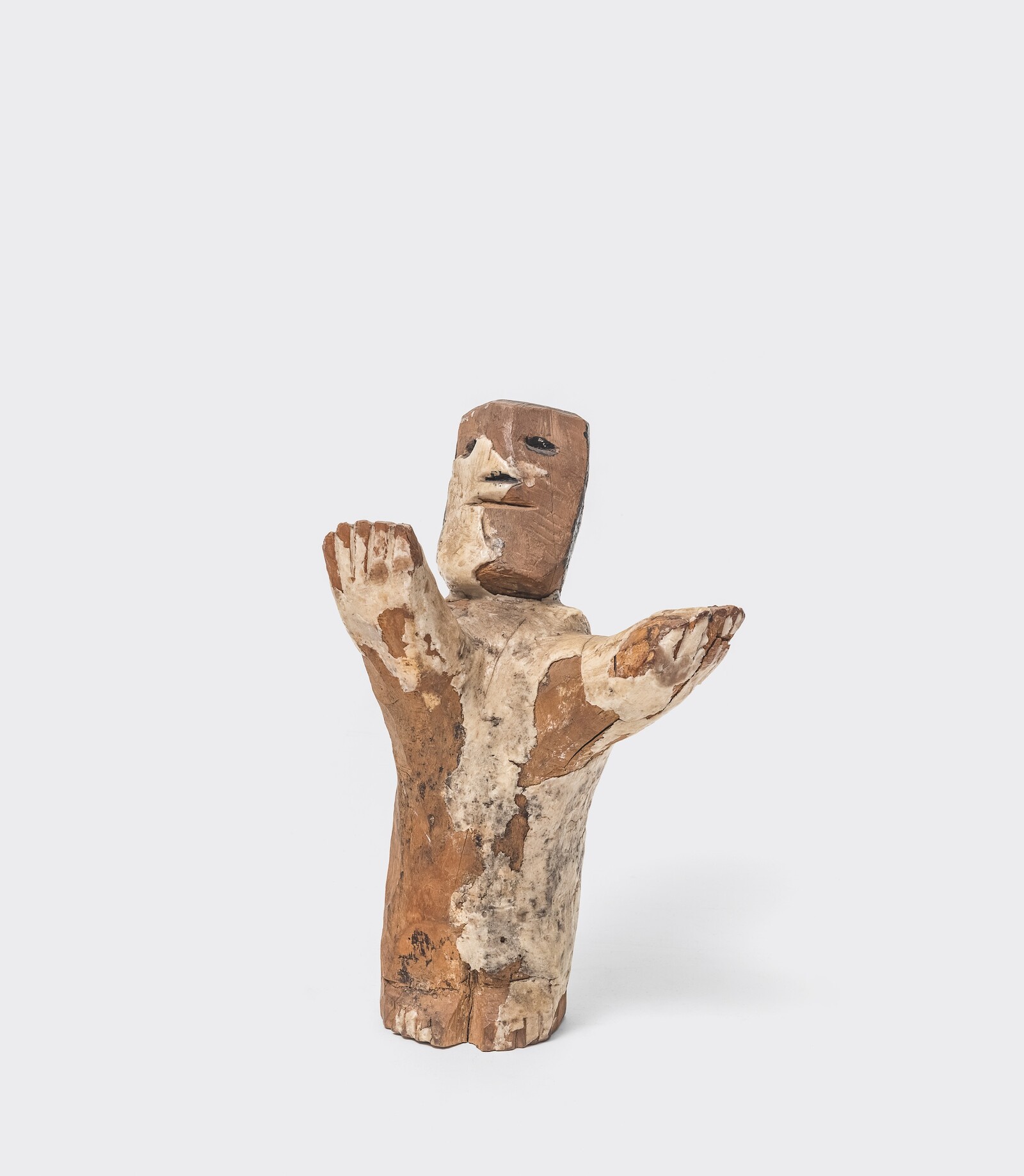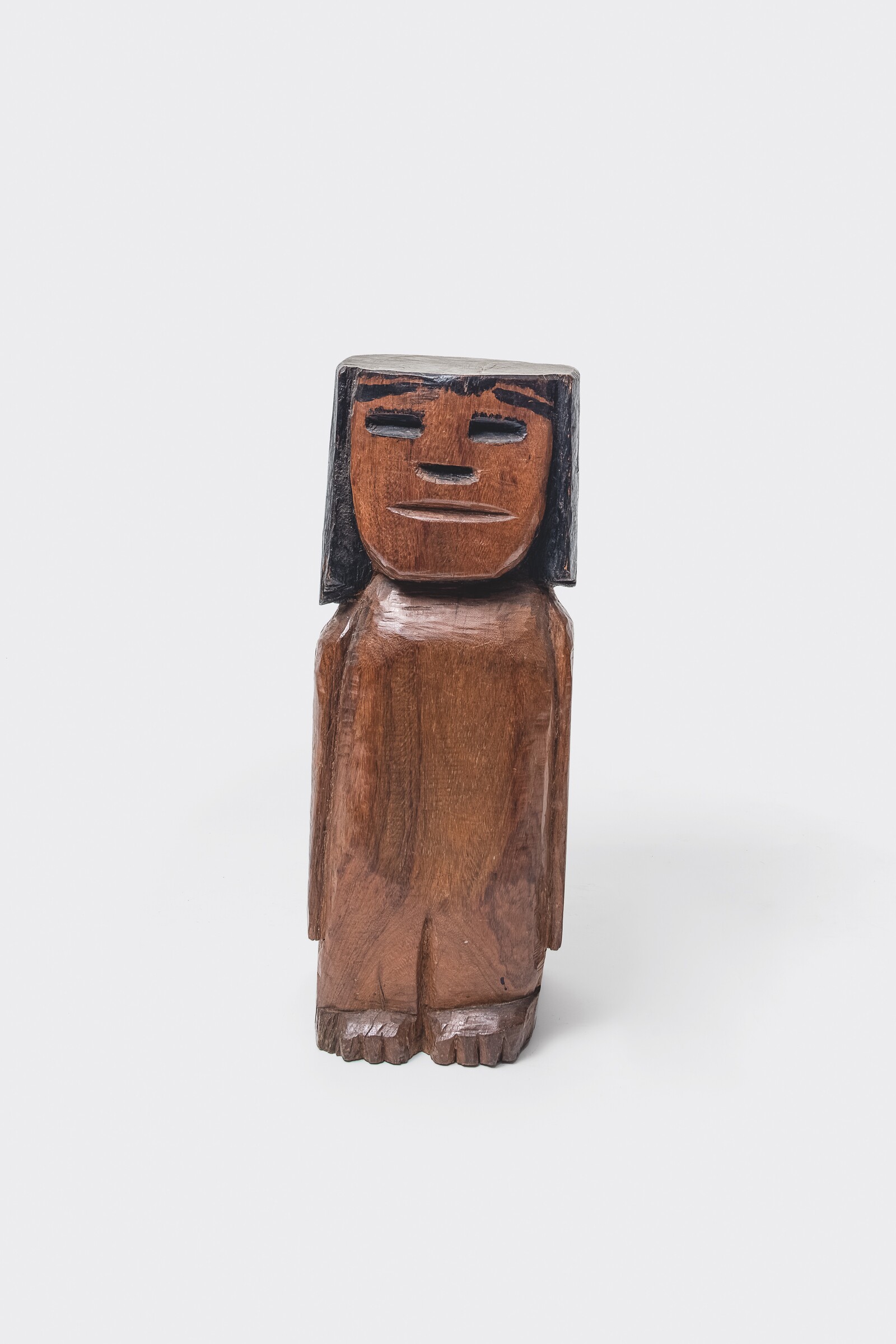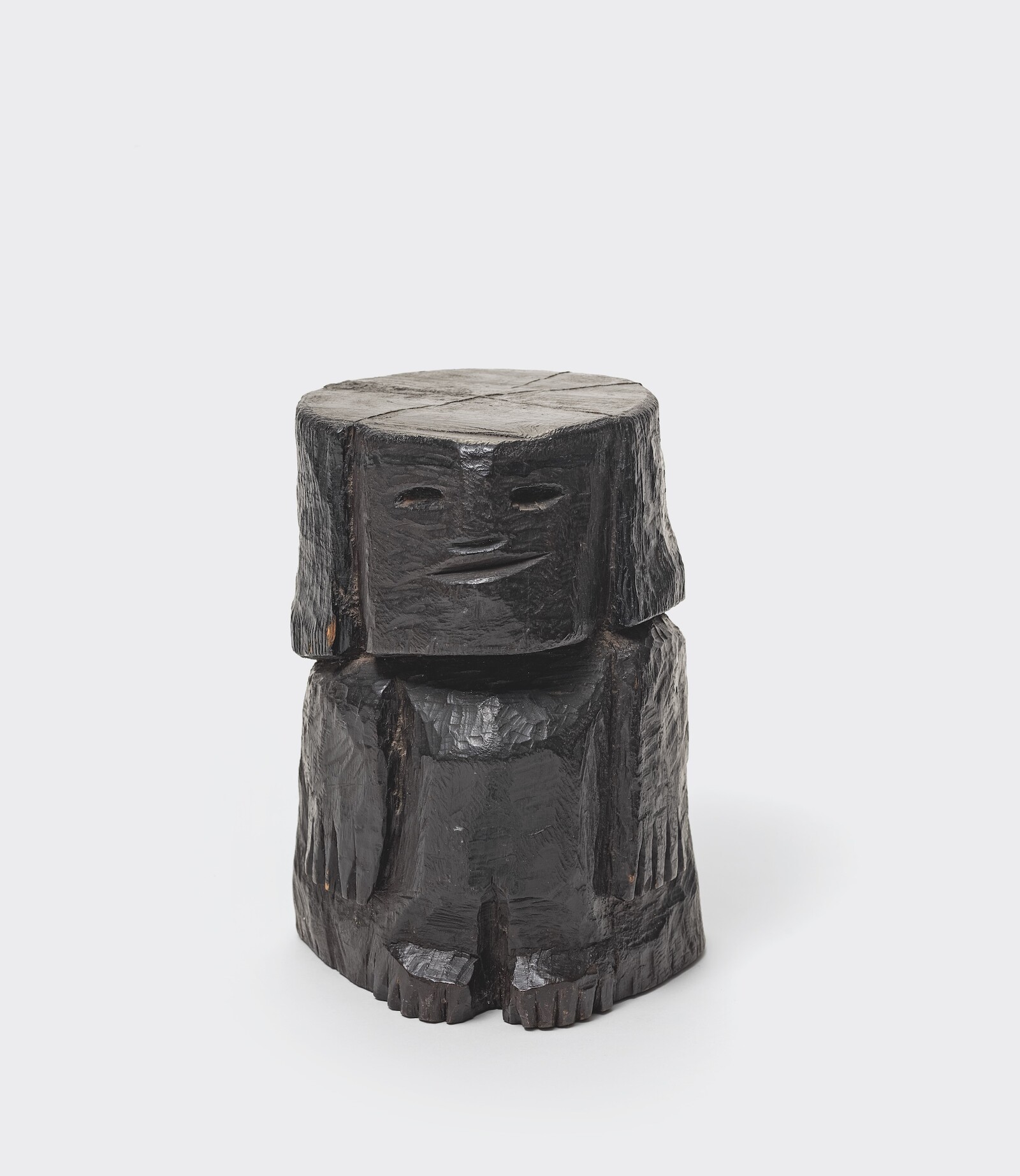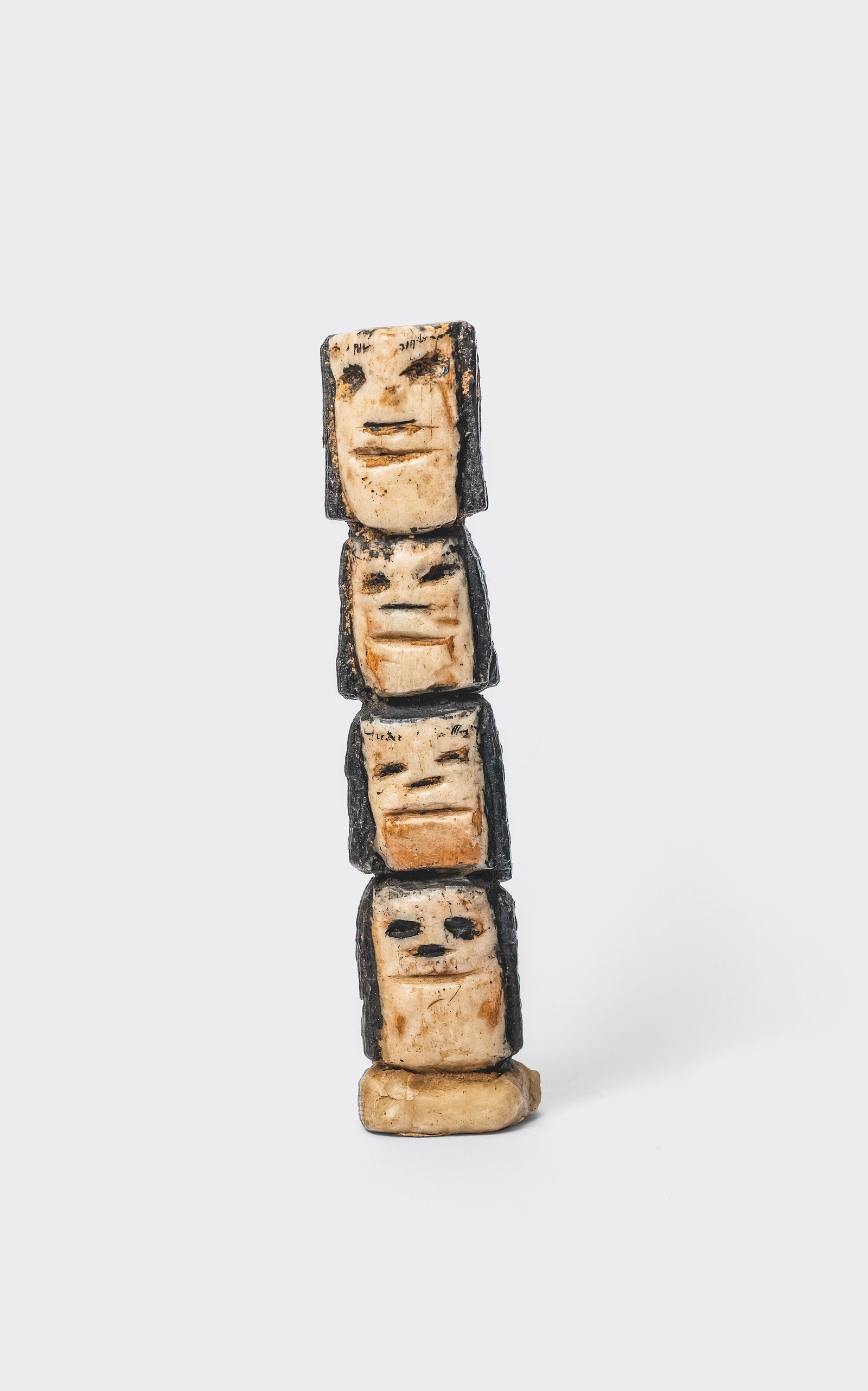Over a hundred pairs of inky-black eyes stare out of their glass vitrines. These are Conceição Freitas da Silva’s “bugres”: the diminutive figures that for over two decades until her death in 1984 the Brazilian artist carved from tree trunks and branches. The short smiles of some disarm, the longer grimaces of others give a more forlorn, or on occasion menacing, disposition. Their arms and legs are mostly demarcated by the slightest carved line, their heads flat-pated and running with the merest hint of neck into the stocky bodies. Their gender is indeterminate. Such was Conceição’s connection with the creatures that preoccupied her whole life—she made nothing else—she adopted the moniker Conceição dos [of] Bugres.
In the majority the bugres—a colonial-era racist slur for indigenous workers offensively perceived as “lazy buggers”—have a pale, yellowish, complexion that stems from the paraffin wax the artist used to decorate her carved figures. Most have a bob of straight painted black hair. Conceição had Kaingang heritage, an ethnicity native to southern Brazil: “I think that Indians have heads like that,” she said. “That’s the only way for it to come out.”1 Each of them possesses uniformity, to a point. Yet the longer you spend observing this army on parade—largely unthreatening, even in their great populace amidst the mezzanine gallery of MASP - Museu de Arte de São Paulo Assis Chateaubriand—individual personalities begin to assert themselves. There is a small platoon whose skin Conceição has painted with black ink and who have shorter and curlier hair, suggestive of Afro-Brazilian heritage, marked out in intricate mottling of the wood. The smallest is 5 cm high, its truncated arms flat against the body like a penguin, its head blocky, the body worn and stained. The tallest stretches up to over a metre: it leans slightly, following the curve of the branch that made it, as if to peer down at its more diminutive comrades. The mane of hair and the lop-sided grin is that of a friendly giant.
Many of these objects are in the hands of one private collector and one commercial gallery, both known for championing Brazil’s so-called “arte popular,” made by autodidacts often based outside the county’s internationally connected cultural hotspots of Rio de Janeiro and São Paulo. That there are no institutional loans nor, until now, any of Conceição’s work in MASP’s collection, is telling of how she was regarded while alive. Not that the artist was unknown or truly an “outsider.” She was involved in the artists’ association of Mato Grosso do Sul, the state on Brazil’s western land border where she moved to from Rio Grande de Sol, and she attracted a steady stream of buyers. (With refreshing honesty, when asked in 1979 why the size of her bugres gradually increased, Conceição answered: “Because people were ordering bigger ones. I complied.”)2 Yet throughout her lifetime the price point of the bugres remained that of a craft-object, and she died impoverished.
That MASP has now dedicated a solo exhibition to her work speaks as much to institutional self-reflection as it does to the artist’s legacy. One could liken the sculptures to Catholic ex voto objects, mine Conceição’s professed Spiritist beliefs for explanation of the work, or make a convincing argument about their relationship with Constantin Brancusi—not least the modernist’s portraits of Mademoiselle Pogany. (A particularly strange group of works in Conceição’s show features heads without bodies—three, four, five—piled upon each other as totems.) In the accompanying catalogue, however, MASP’s curators draw strongly on Conceição’s indigenous identity, with good reason. One essay notes that the Kaingang see the faces of wood spirits in the trunks of the forest trees; Conceição is almost shamanistic in her description of the carving being guided by the apparent psychic properties of the material: “The wood is who knows what to do. The nature of wood is wise,” she said.3 There is a personality to the bugres that extends beyond mere pareidolia to a complex non-European understanding of the world.
The Bienal de São Paulo, currently on show across town, features an unprecedented number of indigenous contemporary artists, complimenting recent survey shows of new indigenous-authored work at the city’s Pinacoteca museum and the Museu de Arte Moderna.4 In many indigenous cultures the idea of art, as understood in western culture, is a colonized one; instead, the act of making has nothing to do with representation or the tenets of modernism, but a manifestation of a cosmological idea or entity (a spirit perhaps, or an ancestor). The elevation of Conceição’s bugres provides the roots for those younger artists who are now coming to the fore, a reckoning with the colonization of knowledge: in incorporating the name of her creations into her own, she refuses the distinction between human author, art object, and nature. To give her and the bugres this platform is an important moment in the reconstruction of Brazilian cultural history.
Quoted in Conceição Dos Bugres: Tudo É Da Natureza Do Mundo (The Nature Of The World), eds Amanda Carneiro and Fernando Oliva (Sao Paulo: MASP, 2021), 69–72.
Idem.
Idem.
Filipe Molitor’s review of the 34th Bienal de São Paulo was published on September 9: https://www.art-agenda.com/features/417989/34th-bienal-de-so-paulo-though-it-s-dark-still-i-sing.
